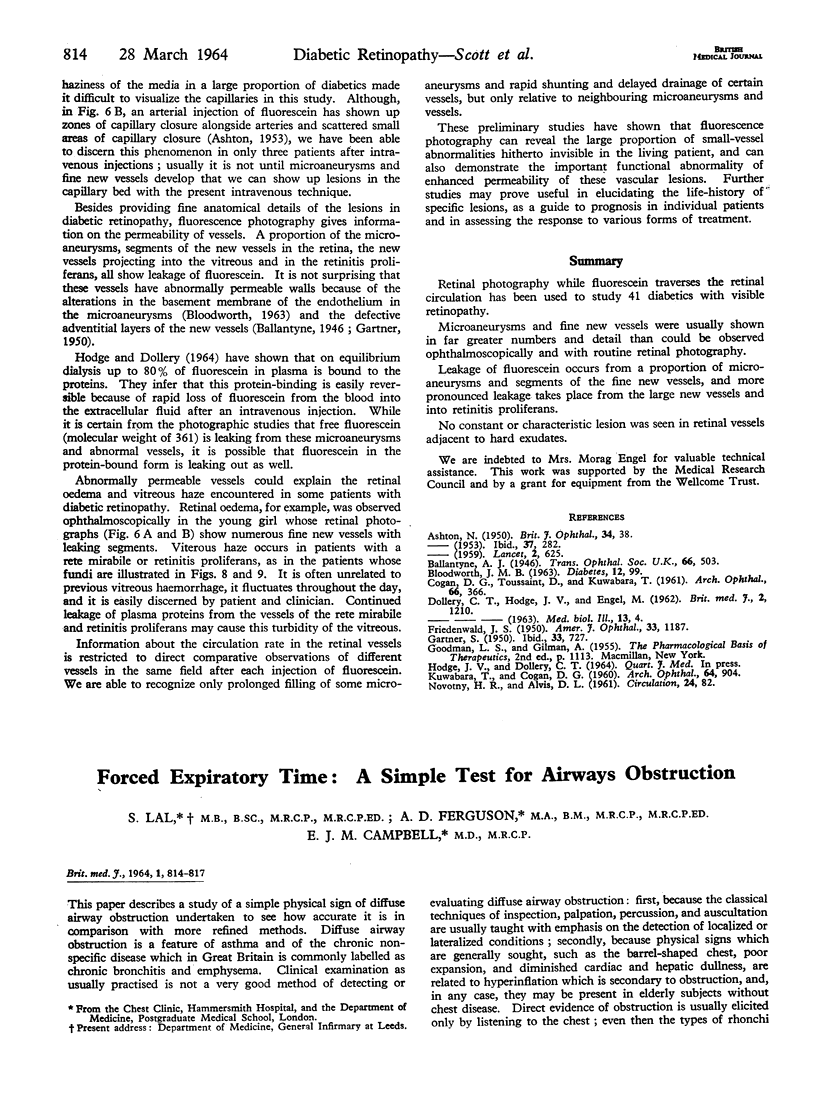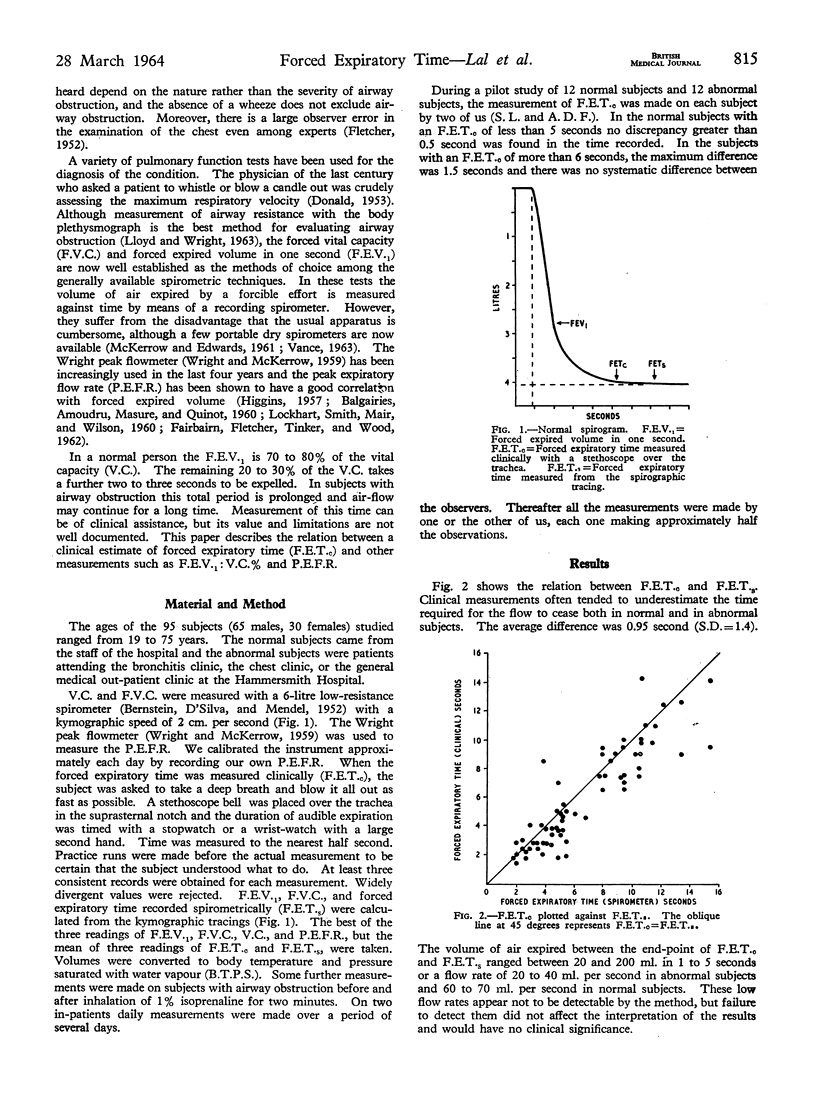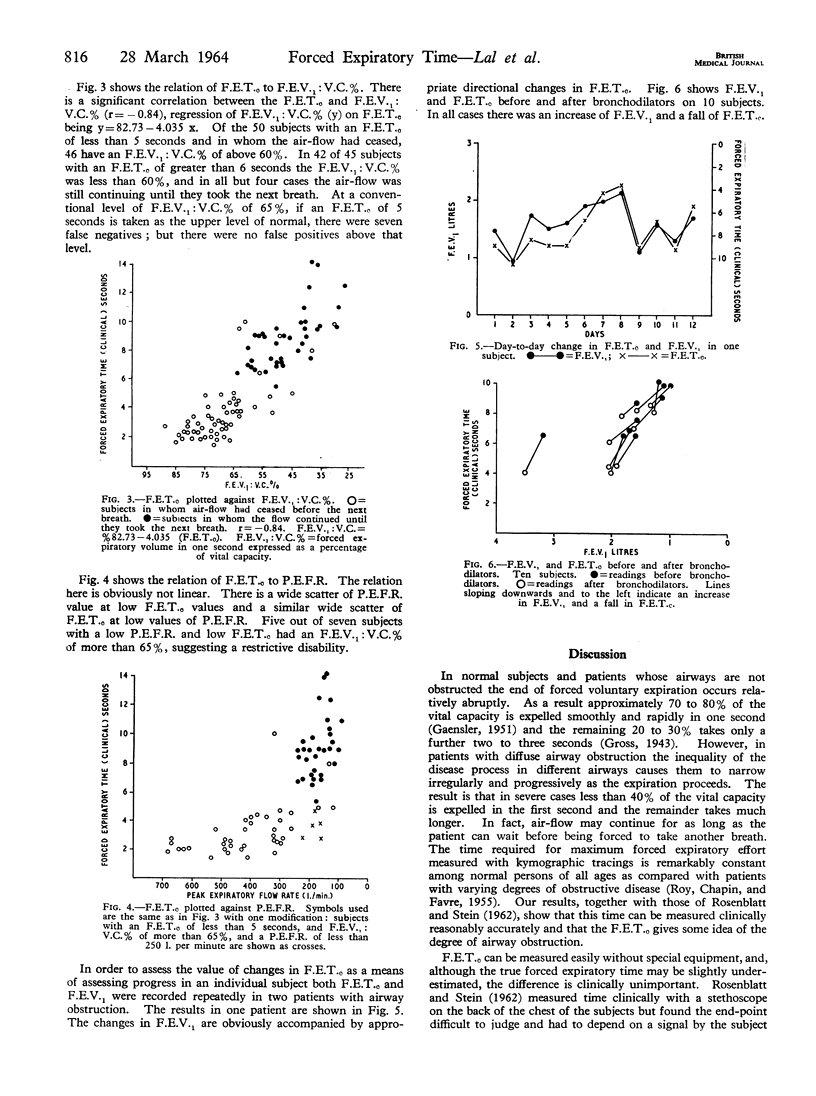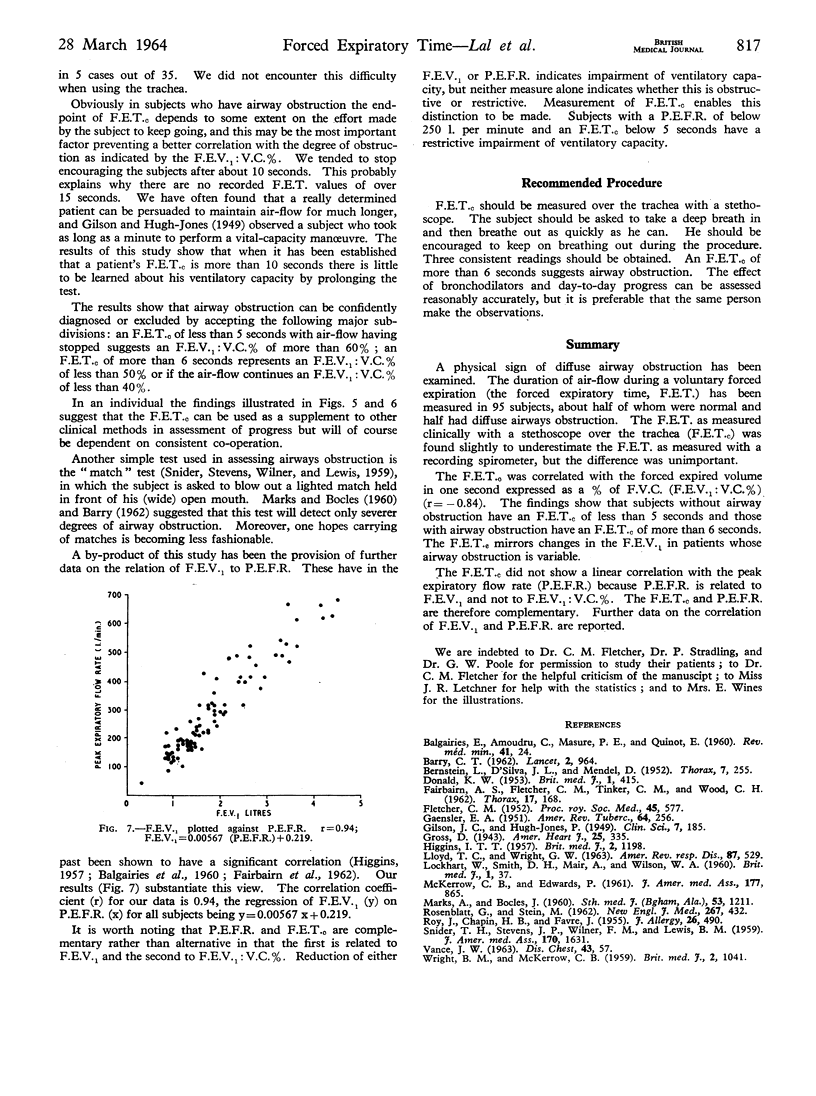Full text
PDF



Selected References
These references are in PubMed. This may not be the complete list of references from this article.
- BARRY C. T. The Snider match test. Lancet. 1962 Nov 10;2(7263):964–964. doi: 10.1016/s0140-6736(62)90728-6. [DOI] [PubMed] [Google Scholar]
- BERNSTEIN L., D'SILVA J. L., MENDEL D. The effect of the rate of breathing on the maximum breathing capacity determined with a new spirometer. Thorax. 1952 Sep;7(3):255–262. doi: 10.1136/thx.7.3.255. [DOI] [PMC free article] [PubMed] [Google Scholar]
- DONALD K. W. The definition and assessment of respiratory function. I. Br Med J. 1953 Feb 21;1(4807):415–422. doi: 10.1136/bmj.1.4807.415. [DOI] [PMC free article] [PubMed] [Google Scholar]
- FAIRBAIRN A. S., FLETCHER C. M., TINKER C. M., WOOD C. H. A comparison of spirometric and peak expiratory flow measurements in men with and without chronic bronchitis. Thorax. 1962 Jun;17:168–174. doi: 10.1136/thx.17.2.168. [DOI] [PMC free article] [PubMed] [Google Scholar]
- FLETCHER C. M. The clinical diagnosis of pulmonary emphysema; an experimental study. Proc R Soc Med. 1952 Sep;45(9):577–584. [PubMed] [Google Scholar]
- GAENSLER E. A. Analysis of the ventilatory defect by timed capacity measurements. Am Rev Tuberc. 1951 Sep;64(3):256–278. doi: 10.1164/art.1951.64.3.256. [DOI] [PubMed] [Google Scholar]
- HIGGINS I. T. Respiratory symptoms, bronchitis, and ventilatory capacity in random sample of an agricultural population. Br Med J. 1957 Nov 23;2(5055):1198–1203. doi: 10.1136/bmj.2.5055.1198. [DOI] [PMC free article] [PubMed] [Google Scholar]
- LLOYD T. C., Jr, WRIGHT G. W. Evaluation of methods used in detecting changes of airway resistance in man. Am Rev Respir Dis. 1963 Apr;87:529–537. doi: 10.1164/arrd.1963.87.4.529. [DOI] [PubMed] [Google Scholar]
- LOCKHART W., SMITH D. H., MAIR A., WILSON W. A. Practical experience with the peak flow meter. Br Med J. 1960 Jan 2;1(5165):37–38. doi: 10.1136/bmj.1.5165.37. [DOI] [PMC free article] [PubMed] [Google Scholar]
- MARKS A., BOCLES J. The match test and its significance. South Med J. 1960 Oct;53:1211–1216. doi: 10.1097/00007611-196010000-00002. [DOI] [PubMed] [Google Scholar]
- ROSENBLATT G., STEIN M. Clinical value of the forced expiratory time measured during auscultation. N Engl J Med. 1962 Aug 30;267:432–435. doi: 10.1056/NEJM196208302670903. [DOI] [PubMed] [Google Scholar]
- ROY J., CHAPIN H. B., FAVRE J. Studies in pulmonary ventilatory function. I. Vital capacity, first one-second capacity, and forced respiration curves in patients with asthma; comparative evaluation of methods. J Allergy. 1955 Nov;26(6):490–506. doi: 10.1016/0021-8707(55)90090-3. [DOI] [PubMed] [Google Scholar]
- SNIDER T. I., STEVENS J. P., WILNER F. M., LEWIS B. M. Simple bedside test of respiratory function. J Am Med Assoc. 1959 Aug 1;170(14):1631–1632. doi: 10.1001/jama.1959.03010140011004. [DOI] [PubMed] [Google Scholar]
- WRIGHT B. M., McKERROW C. B. Maximum forced expiratory flow rate as a measure of ventilatory capacity: with a description of a new portable instrument for measuring it. Br Med J. 1959 Nov 21;2(5159):1041–1046. doi: 10.1136/bmj.2.5159.1041. [DOI] [PMC free article] [PubMed] [Google Scholar]


